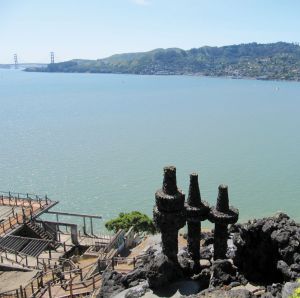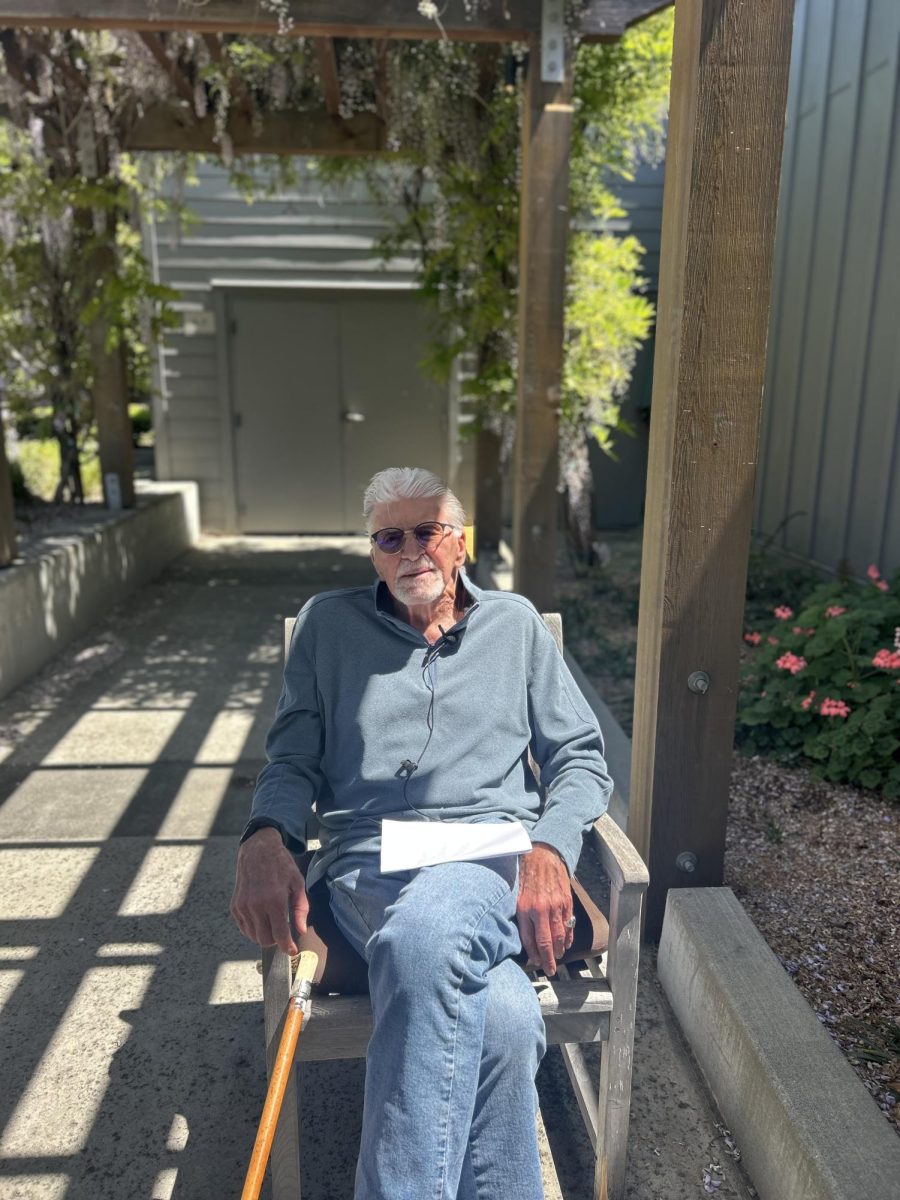The lot at 401 and 419 Belvedere Avenue sits on a ridge overlooking the Sausalito hills and the Golden Gate Bridge. It’s flanked by multimillion-dollar estates with multimillion-dollar views, but this lot is empty. What would have been a stately mansion is a skeleton of plywood; what would have been a landscaped garden is a maze of emptied pools, broken railings, and graffitied walls.
The lot on Belvedere Avenue is commonly known as the “Lava House” because of the lava rock that covers the now-desolate gardens. The Lava House is a popular spot to explore and hang out in — despite the “no trespassing” signs along the road, teenagers and adults alike still find a way to enter the property.

Last year, one of the original Lava House properties was sold for $25 million, the most expensive real estate sale in Marin’s history. The other two properties still remain, their lava rock foundations slowly crumbling into the hillside.
Belvedere Chief of Police Tricia Seyler said that the police department has worked to keep the Lava House closed to the public, as the property is not structurally sound.
“Some of the access stairs and landings have become very dangerous,” Seyler said. “When people go down there at nighttime, we are always worried.”
Seyler said that although some people just go to the Lava House to explore the property, the police department has found people engaging in illicit activities there.
“We found evidence that people go down there and vandalize,” Seyler said. “We have found people down there that have been drinking or in possession of illegal substances.”
According to Seyler, residents who live adjacent to the property have been affected by the Lava House and the crowds that it draws. She said that people have started bonfires at the house, potentially putting neighboring houses in danger.
Belvedere resident Hugh Scott, who lives across the street from the Lava House, said that he often notices teenagers trespassing on the Lava House property.
“Sometimes there are too many kids there, there’s a lot of noise, and we can hear it from our house. Sometimes we call the police and they come out,” Scott said.
Scott said that the trespassers are not concerned with their safety.
“You see them there, irrespective of all the signs,” Scott said. “Ultimately someone is going to drink too much and party too much and they’re going to fall a long ways. It’s a potential problem waiting to happen.”
The Lava House has a long history of controversy and conflict in Belvedere. Jerry Ganz, the creator of the mass-produced seat belt, bought three properties—401, 419, and 425 Belvedere Avenue—in 1974.
The years that followed were filled with conflict as Ganz tried and failed to approve plans for a 30,000 square foot house, suing the city of Belvedere twice and alleging that they had conspired to reject his plans.
Finally, in 1991, Ganz’s plans were approved and he began construction on a 16,000 square foot house. But he demolished the house two years later, never having lived in it. The property has been virtually abandoned ever since—a fire gutted what remained of the house, the property was vandalized, and the city put up a barrier around the property in an effort to keep out trespassers.


















